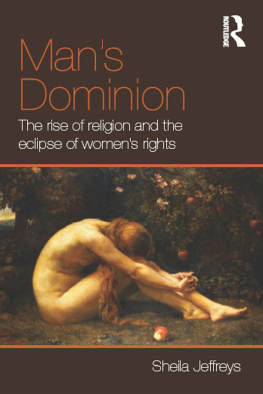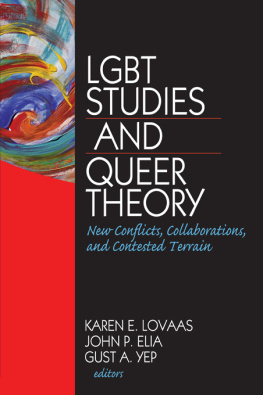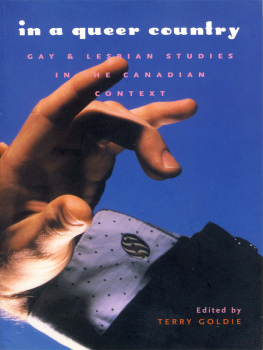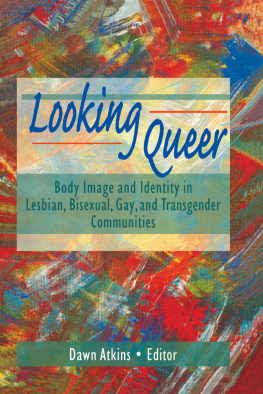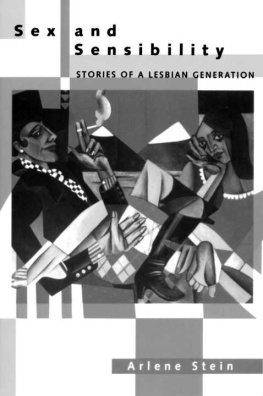Acknowledgements
The ideas in this book owe a great deal to all those good discussions I have had over the years that the book has been brewing. Feminists and lesbian feminists in Australia, the UK, the USA, Canada and many other countries have contributed to the development of my thinking, particularly those involved in the international struggle against sexual exploitation. Ideas that come out of a political movement are not the result of one person sitting in an attic, but emerge from a collective process. My sisters and friends in the Coalition Against Trafficking in Women Australia and all those with whom I am fortunate enough to discuss ideas here in Melbourne have sustained me, particularly Carole Moschetti and Kathy Chambers. I am grateful to young lesbians and feminists in Melbourne who have kept me informed of how difficult it is these days to maintain lesbian feminist vision and politics within a queer culture. I am fortunate in having the resources and encouragement of my department, Political Science, at the University of Melbourne, to put into writing what so many other lesbian feminists have been thinking for so long. My undergraduate and postgraduate students have helped me develop my ideas and have contributed their knowledge and understanding of what is happening in the parts of lesbian and gay culture in which they seek to live and thrive.
I am particularly grateful to Ruth Margerison and John Stoltenberg who read this book in manuscript and offered valuable insights. Both John Stoltenberg and Christopher Kendall have inspired me in their written work on gay male sexuality and gay male pornography. I am aware that men who stand out against the dominant values of queer sex culture do not have an easy time, and I am grateful that they continue to do so.
Introduction
In the 1990s a phenomenon developed within sectors of the lesbian community known as packing (Volcano and Halberstam 1999). This entailed the wearing of a dildo down the trouser leg to suggest the existence of a penis. This practice signalled that, for the lesbians who adopted it, the worship of masculinity had triumphed over the lesbian feminist project of ending gender hierarchy. At the same time a cult of transsexualism developed amongst similar groups of lesbians. Some of the lesbians who had demonstrated their commitment to achieving male power and privilege by assuming a butch identity, by packing and holding drag king contests to see who could most convincingly look like a man, and particularly a gay man, moved toward the mutilating surgery and hormone consumption which promised realness in their quest (Devor 1999). The change from the heyday of lesbian feminism in which we understood, as Adrienne Rich said, that The meaning of our love for women is what we have constantly to expand (Rich 1979: 230) to a situation where, in some influential and much publicized parts of the lesbian community, masculinity is the holy grail, could not be more profound.
Why did this happen? I shall argue here that the most significant reason was the influence of a powerful male gay culture which, from the late 1970s onwards, rejected the gay liberation project of dismantling gender hierarchy and chose manhood as its goal. Through sadomasochism, gay male pornography, sexual practices of public sex and prostitution that celebrated masculine privilege, dominant areas of gay male culture created a hypermasculinity and said this was gayness, and this was good. In the last decade several US books by gay men have launched broad-ranging critiques of gay mens sexual freedom agenda. These critiques are inspired primarily by the continued extremely high rate of HIV infection in the USA, but also by a perception that gay commercial sex culture impoverishes lives and relationships (Rotello 1997; Signorile 1998a). Some male gay theorists have employed feminist understandings to launch swingeing critiques of the gay male cult of masculinity (Stoltenberg 1991; Levine 1998; Kendall 1997; Jensen 1998). This work by gay men is a most useful starting point from which to embark on a lesbian feminist examination of gay and queer culture today. It is the recognition of the very harmful impact of the gay male worship of masculinity on the lives of lesbians that impels me to examine gay male culture and politics in this book.
The harmful practices that have developed in this period have all been given theoretical justification within queer theory and politics, I argue that when queer politics in the 1990s attacked the principles of gay liberation and lesbian feminism, which required the transformation of personal life, there was a backlash against the possibility of radical social change. The new politics was based, quite explicitly, upon a repudiation of lesbian feminist ideas. Queer politics enshrined a cult of masculinity. I will argue here that the political agenda of queer politics is damaging to the interests of lesbians, women in general, and to marginalized and vulnerable constituencies of gay men. The notion that queer politics could represent the interests of lesbians as well as gay men arises from a mistaken idea that lesbians and gay men can form one unified constituency with common interests. Lesbian feminism was created out of the feminist understanding that lesbians are women, and the interests of women in mixed political organizing are regularly excluded or even directly contradicted. This understanding has been lost in queer politics, and this book is written to bring the interests of women and lesbians once more into the forefront of lesbian and gay political discussion.
The welcome outpouring of books on lesbian and gay political and legal theory in the 1990s seems to start from the premiss that lesbians and gay men form one unified social category which has a homogeneous agenda to serve unified interests (Evans 1993; Wilson 1995; Vaid 1995; Stychin 1995; Bell and Binnie 2000). Much of this new writing seeks to integrate lesbians and gays into the theorizing of citizenship with the creation of new categories of sexual or queer citizenship. Diane Richardson is one of the very few voices pointing out that lesbians cannot be simply subsumed within such a category (Richardson 2000a, b). The general absence of such a feminist viewpoint in relation to sexual citizenship is a puzzle. Books by feminist theorists on womens citizenship do analyse the contradictory interests of women and men. They point out that the idea and practice of mens citizenship have been created precisely out of the subordination of women (Pateman 1988; Vogel 1994). But this feminist understanding seems to disappear in the theorizing of sexual citizenship. In fact, lesbians and gay men are far from a unified category with unified interests. Lesbians are women, and lesbian theories of citizenship must continue to examine the contradictions between the interests of women and men, particularly in relation to the contradictions between the interests of gay men and the whole constituency of women.
No necessary community of interest
Lesbian feminists, who have chosen to organize and live their lives separately from gay men, have long been keenly aware that there was no necessary community of interest between lesbians and gay men. The poet and writer Adrienne Rich wrote in the late 1970s, when lesbian feminism was at its peak, that the interests of lesbians were threatened by both heterosexual and gay mens cultures.
Lesbians have been forced to live between two cultures, both male-dominated, each of which has denied and endangered our existence. On the one hand, there is the heterosexist, patriarchal culture.... On the other hand, there is homosexual patriarchal culture, a culture created by homosexual men, reflecting such male stereotypes as dominance and submission as modes of relationship, and the separation of sex from emotional involvement - a culture tainted by profound hatred for women. The male gay culture has offered lesbians the imitation role-stereotypes of butch and femme, active and passive, cruising, sado-masochism, and the violent, self-destructive world of gay bars. Neither heterosexual culture nor gay culture has offered lesbians a space in which to discover what it means to be self-defined, self-loving, women-identified, neither an imitation man nor his objectified opposite. (Rich 1979: 225)
Next page


